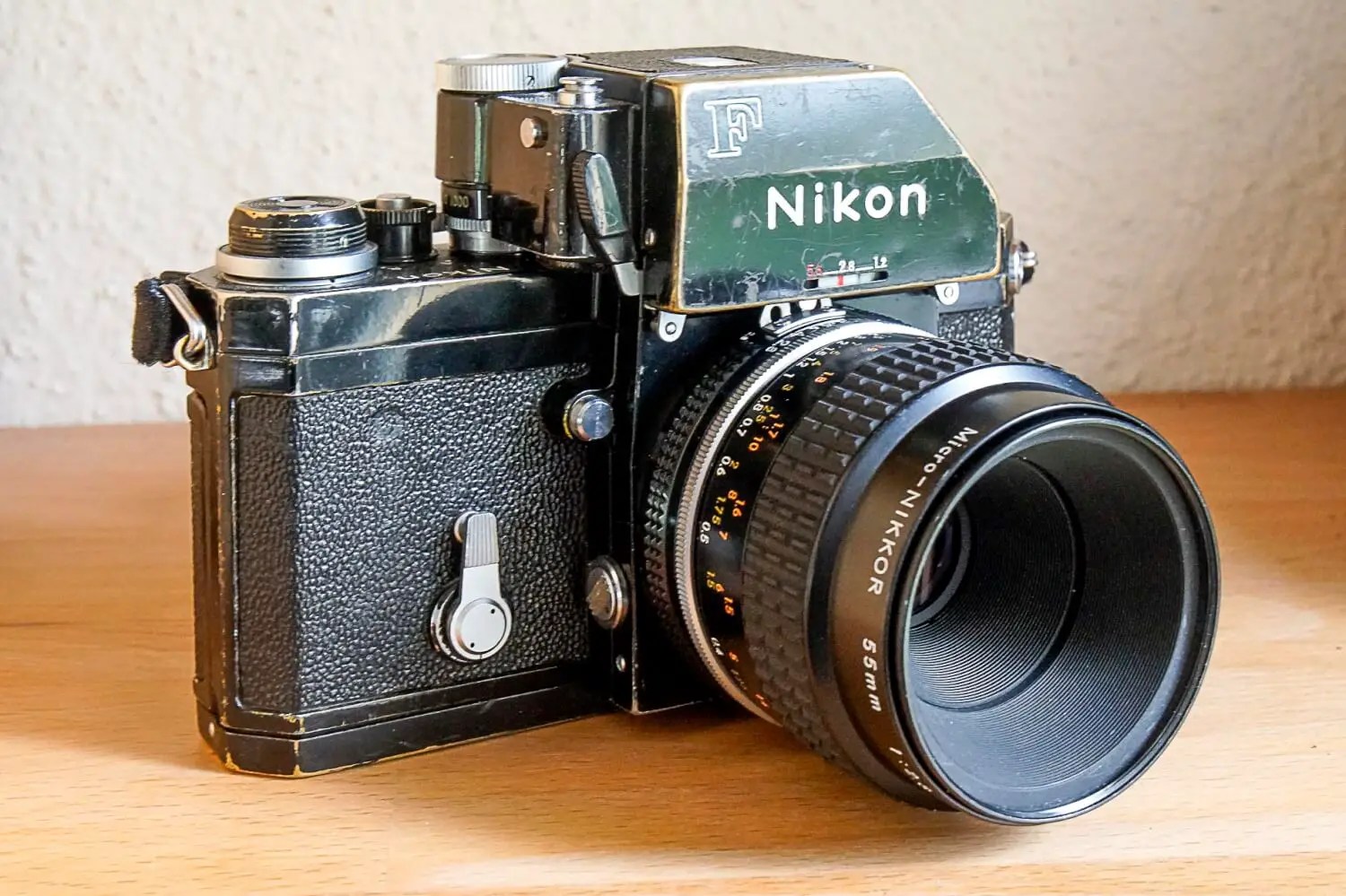No, this ode is not about the camera, lens and film mentioned in the headline and shown in the photo below. The praises of NEOPAN 100 ACROS film, the „F“ and the Micro-Nikkor have been proclaimed in countless other contributions on this site and on many others. This is more about a device that lends a vital helping hand when it comes to bringing the results of what the former have collectively achieved to light. Or rather: to printing them on paper in the darkroom. In fact, it is as critical to the photographic positive process as a shutter is to a camera.

I recently planned to make a set of contact prints from large-format paper negatives shot on an antique field camera. A friend of mine, Lothar Schwarz, heard me mention this, and while we were discussing the intricate questions about exposure times, I told him that I would be using my smartphone to take care of timing the exposures. This is because I no longer make paper prints as enlargements in the darkroom, and therefore sold my trusty JOBO electronic timer a long time ago, along with most of my other darkroom equipment. Lothar mentioned that he had an elderly timer in his attic and he ended up gifting me this piece of classic darkroom equipment.
My first impulse was to find out who the manufacturer was, and to fit a longer connecting cable to the device. On taking off the base plate, I was greeted by a mess of completely disintegrated cable insulation. The material had become so brittle that it practically disintegrated at the touch of a screwdriver. No chance, therefore, of using the timer in the lab a safe manner. So back it went to the generous donor — who is also a wizard with a soldering iron and returned the timer to me as an electrically completely refurbished machine.
The nameless timer itself is very much a no-frills device. It features an on/off switch for the connected lighting source, and a lever with which to set exposure times of up to 30 seconds. A locking clamp held in place with a screw makes it possible to define a fixed timing preset. Setting the timer also winds up the spring of the internal clock.
These five frames are in celebration of the timer, and start with the timer’s heart (of sorts), the dial:

A solid white pushbutton at the top sets the timing process in motion, accompanied by very audible ticking sounds that end with a bit of a crash as the timer comes to a standstill. Pretty simple, not really much to write home about.
…but from the word go I was intrigued by this timer’s stylish design. The housing is made of shiny bakelite, a popular substance in the mid-20th century, also used for making countless other electrical devices. The black bakelite forms a stark contrast to the bright matte metal surface of the dial. All in all, the housing conveys a sense of the fluent aerodynamic forms of 1940s car design (think: cool mudguards of American sports cars).


The only part of the design that feels distinctly out of place is the clunky socket at the back, needed to plug in the enlarger or other light source used to expose the photographic paper.

Not only do I find the design intriguing – using this timer brings back the sound and feeling of my very first contact with photography in early childhood. In those days my mum, a professional photographer, used a large closet in our children’s bedroom to do darkroom work, printing family pictures.
So on many an evening, after darkness had set in, my brother and I went to sleep with the sound of the mechanical timer clicking away in the background and bringing each exposure to an end with a loud metallic clack – followed by the sound of chemicals lapping in the various trays as the prints were being carefully agitated.

So, in a sense, my darkroom experience has come full circle – thanks to the unwavering presence of reliable mechanical timing machines for key photographic processes. Darkroom timers rarely, if ever, get a mention in gear reviews. This they have in common with other pieces of equipment that never make the spotlight.
Which other unsung heroes in the ranks of photographic gear come to your mind — perhaps meriting an honourable mention in photographic history? I can think of the humble cable release, the film-changing bag that makes it possible to do without a full-fledged darkroom, that crazy tool that helps you recover the beginning of your 35mm film after it has been spooled right back into its canister …
Thanks for reading,
~ Jens
Share your knowledge, story or project
The transfer of knowledge across the film photography community is the heart of EMULSIVE. You can add your support by contributing your thoughts, work, experiences and ideas to inspire the hundreds of thousands of people who read these pages each month. Check out the submission guide here.
If you like what you’re reading you can also help this passion project by heading over to the EMULSIVE Patreon page and contributing as little as a dollar a month. There’s also print and apparel over at Society 6, currently showcasing over two dozen t-shirt designs and over a dozen unique photographs available for purchase.







